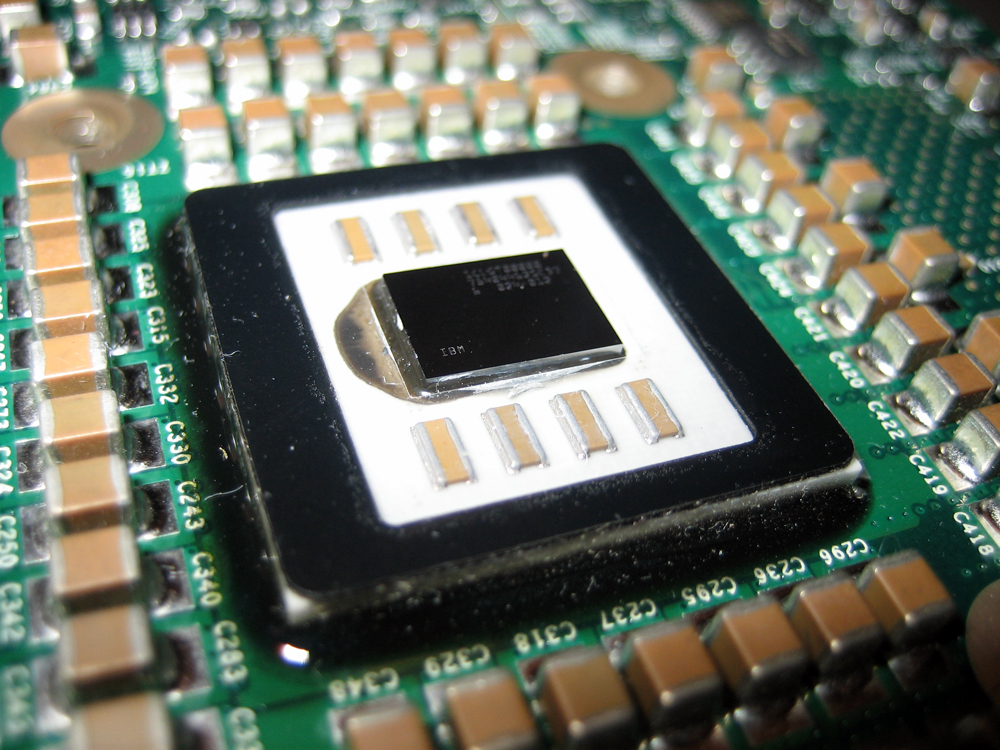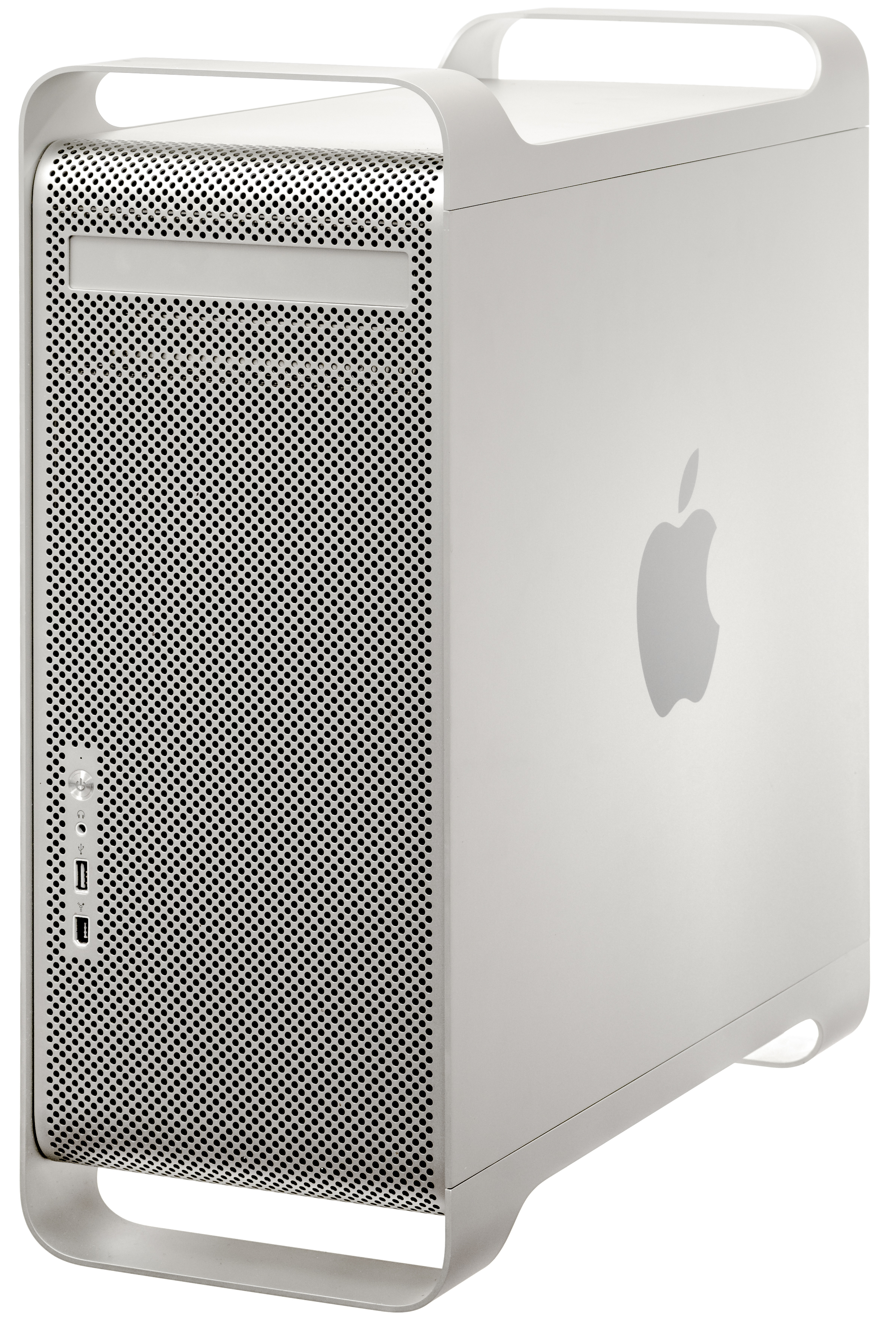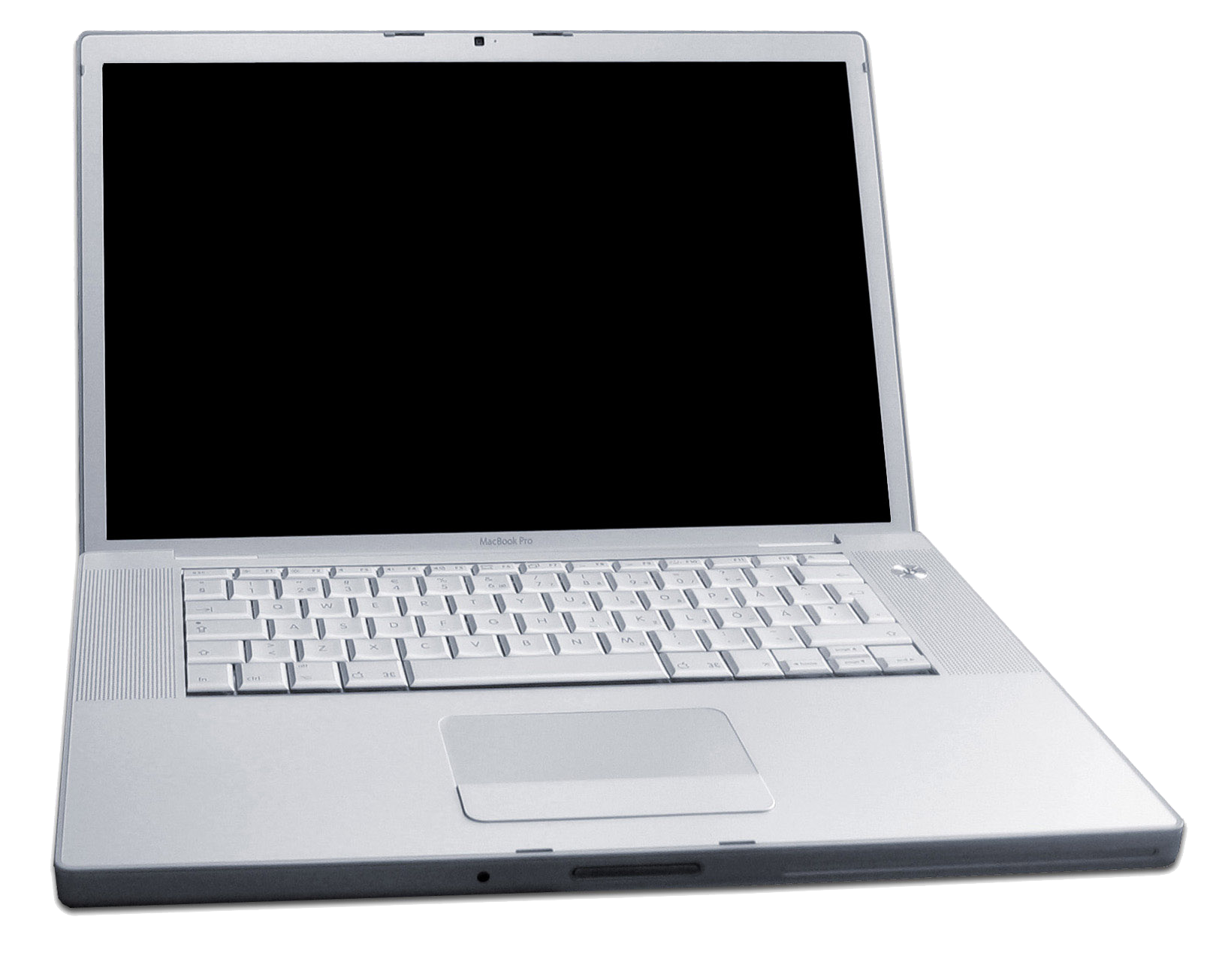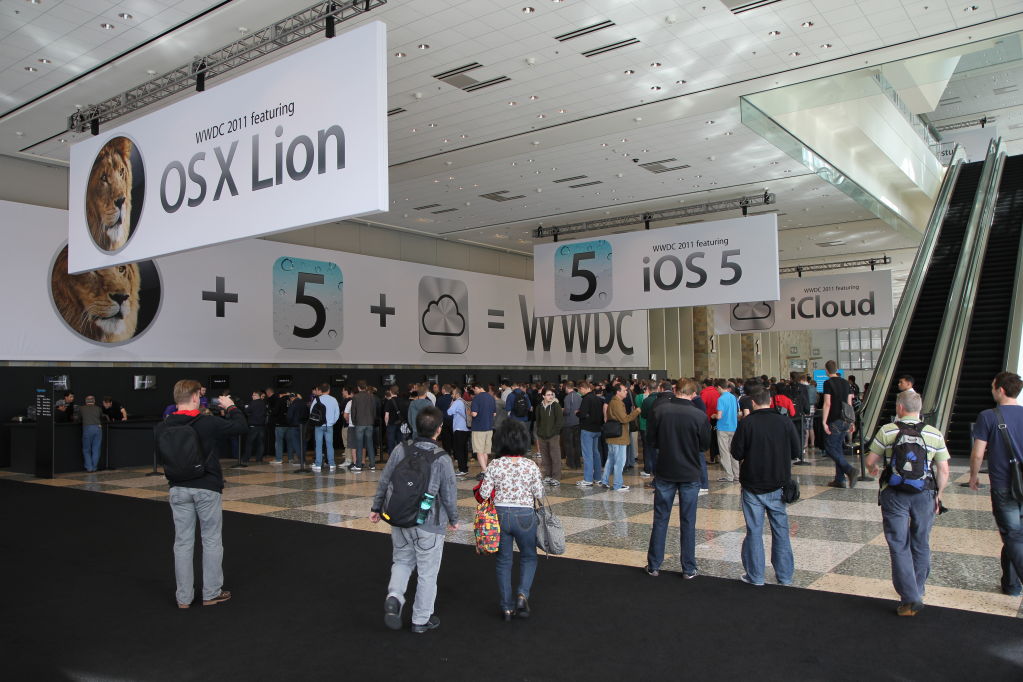|
Mac Transition To Intel Processors
Apple transitioned the CPUs of their Mac and Xserve computers from PowerPC to the x86 architecture from Intel. The change was announced at the 2005 Worldwide Developers Conference (WWDC) by then-Apple CEO Steve Jobs, who said Apple would gradually stop using PowerPC microprocessors supplied by Freescale (formerly Motorola) and IBM. This was the second time Apple changed the processor instruction set architecture of its personal computers. The first was in 1994, when Apple discarded the Mac's original Motorola 68000 series architecture in favor of the then-new PowerPC platform. Apple's initial press release said the move would begin by June 2006 and finish by the end of 2007, but it actually proceeded much more quickly. The first-generation Intel-based Macintoshes were released in January 2006 with Mac OS X 10.4.4 Tiger. In August, Jobs announced the last models to switch, with the Mac Pro available immediately and the Intel Xserve available by October (it actually shipped ... [...More Info...] [...Related Items...] OR: [Wikipedia] [Google] [Baidu] |
Apple Inc
Apple Inc. is an American multinational technology company headquartered in Cupertino, California, United States. Apple is the largest technology company by revenue (totaling in 2021) and, as of June 2022, is the world's biggest company by market capitalization, the fourth-largest personal computer vendor by unit sales and second-largest mobile phone manufacturer. It is one of the Big Five American information technology companies, alongside Alphabet, Amazon, Meta, and Microsoft. Apple was founded as Apple Computer Company on April 1, 1976, by Steve Wozniak, Steve Jobs and Ronald Wayne to develop and sell Wozniak's Apple I personal computer. It was incorporated by Jobs and Wozniak as Apple Computer, Inc. in 1977 and the company's next computer, the Apple II, became a best seller and one of the first mass-produced microcomputers. Apple went public in 1980 to instant financial success. The company developed computers featuring innovative graphical user inter ... [...More Info...] [...Related Items...] OR: [Wikipedia] [Google] [Baidu] |
Mac Pro
Mac Pro is a series of workstations and servers for professionals that are designed, developed and marketed by Apple Inc. since 2006. The Mac Pro, by some performance benchmarks, is the most powerful computer that Apple offers. It is one of four desktop computers in the current Mac lineup, sitting above the Mac Mini, iMac and Mac Studio. Introduced in August 2006, the first-generation Mac Pro had two dual-core Xeon Woodcrest processors and a rectangular tower case carried over from the Power Mac G5. It was replaced on April 4, 2007, by a dual quad-core Xeon Clovertown model, then on January 8, 2008, by a dual quad-core Xeon Harpertown model. Revisions in 2010 and 2012 revisions had Nehalem/ Westmere architecture Intel Xeon processors. In December 2013, Apple released the second-generation Mac Pro with a cylindrical design. Apple said it offered twice the overall performance of the first generation while taking up less than one-eighth the volume. It had up to a 12-core Xe ... [...More Info...] [...Related Items...] OR: [Wikipedia] [Google] [Baidu] |
Hertz
The hertz (symbol: Hz) is the unit of frequency in the International System of Units (SI), equivalent to one event (or cycle) per second. The hertz is an SI derived unit whose expression in terms of SI base units is s−1, meaning that one hertz is the reciprocal of one second. It is named after Heinrich Rudolf Hertz (1857–1894), the first person to provide conclusive proof of the existence of electromagnetic waves. Hertz are commonly expressed in multiples: kilohertz (kHz), megahertz (MHz), gigahertz (GHz), terahertz (THz). Some of the unit's most common uses are in the description of periodic waveforms and musical tones, particularly those used in radio- and audio-related applications. It is also used to describe the clock speeds at which computers and other electronics are driven. The units are sometimes also used as a representation of the energy of a photon, via the Planck relation ''E'' = ''hν'', where ''E'' is the photon's energy, ''ν'' is its freq ... [...More Info...] [...Related Items...] OR: [Wikipedia] [Google] [Baidu] |
64-bit Computing
In computer architecture, 64-bit integers, memory addresses, or other data units are those that are 64 bits wide. Also, 64-bit CPUs and ALUs are those that are based on processor registers, address buses, or data buses of that size. A computer that uses such a processor is a 64-bit computer. From the software perspective, 64-bit computing means the use of machine code with 64-bit virtual memory addresses. However, not all 64-bit instruction sets support full 64-bit virtual memory addresses; x86-64 and ARMv8, for example, support only 48 bits of virtual address, with the remaining 16 bits of the virtual address required to be all 0's or all 1's, and several 64-bit instruction sets support fewer than 64 bits of physical memory address. The term ''64-bit'' also describes a generation of computers in which 64-bit processors are the norm. 64 bits is a word size that defines certain classes of computer architecture, buses, memory, and CPUs and, by extension, the software that runs ... [...More Info...] [...Related Items...] OR: [Wikipedia] [Google] [Baidu] |
PowerPC 970
The PowerPC 970, PowerPC 970FX, and PowerPC 970MP are 64-bit PowerPC processors from IBM introduced in 2002. When used in PowerPC-based Macintosh computers, Apple referred to them as the PowerPC G5. The 970 family was created through a collaboration between IBM and Apple. The project went under the codename GP-UL or Giga Processor Ultra Light, where Giga Processor was the codename for the POWER4 from which the core was derived. When Apple introduced the Power Mac G5, they stated that this was a five-year collaborative effort, with multi-generation roadmap. This forecast however was short-lived when Apple later had to retract its promise to deliver a 3 GHz processor only one year after its introduction. IBM was also unable to reduce power consumption to levels necessary for laptop computers. Ultimately, Apple only used three variants of the processor. IBM's JS20/JS21 blade modules and some low-end workstations and System p servers are based on the PowerPC 970. It is also ... [...More Info...] [...Related Items...] OR: [Wikipedia] [Google] [Baidu] |
Power Mac G5
The Power Mac G5 is a series of personal computers designed, manufactured, and sold by Apple Computer, Inc. from 2003 to 2006 as part of the Power Mac series. When introduced, it was the most powerful computer in Apple's Macintosh lineup, and was marketed by the company as the world's first 64-bit desktop computer. It was also the first desktop computer from Apple to use an anodized aluminum alloy enclosure, and one of only three computers in Apple's lineup to utilize the PowerPC 970 CPU, the others being the iMac G5 and the Xserve G5. Three generations of Power Mac G5 were released before it was discontinued as part of the Mac transition to Intel processors, making way for its replacement, the Mac Pro. The Mac Pro retained a variation of the G5's enclosure design for seven more years, making it among the longest-lived designs in Apple's history. Introduction Officially launched as part of Steve Jobs' keynote presentation at the Worldwide Developers Conference in June 2003 ... [...More Info...] [...Related Items...] OR: [Wikipedia] [Google] [Baidu] |
ARM Architecture
ARM (stylised in lowercase as arm, formerly an acronym for Advanced RISC Machines and originally Acorn RISC Machine) is a family of reduced instruction set computer (RISC) instruction set architectures for computer processors, configured for various environments. Arm Ltd. develops the architectures and licenses them to other companies, who design their own products that implement one or more of those architectures, including system on a chip (SoC) and system on module (SOM) designs, that incorporate different components such as memory, interfaces, and radios. It also designs cores that implement these instruction set architectures and licenses these designs to many companies that incorporate those core designs into their own products. There have been several generations of the ARM design. The original ARM1 used a 32-bit internal structure but had a 26-bit address space that limited it to 64 MB of main memory. This limitation was removed in the ARMv3 series, which ... [...More Info...] [...Related Items...] OR: [Wikipedia] [Google] [Baidu] |
Mac Transition To Apple Silicon
The Mac transition to Apple silicon is the process of changing the central processing units (CPUs) of Apple Inc.'s line of Mac computers from Intel's x86-64 processors to Apple-designed systems on a chip that use the ARM64 architecture. CEO Tim Cook announced a "two-year transition plan" in his WWDC keynote address on June 22, 2020, and the first Macs with Apple-designed systems on a chip were released that November. This is the third time Apple has switched the Macintosh to a new instruction set architecture. The first was from the Motorola 68000 series to PowerPC chips in 1994 and the second from PowerPC to Intel processors using the x86 architecture in 2005–2006. Background The Macintosh was initially based on the Motorola 68000 architecture, switching, after evaluating several possibilities, to the PowerPC family Apple co-developed with IBM and Motorola, in the early 1990s. With its second architecture switch, starting in 2005, to Intel 32-bit and 64-bit x86, wit ... [...More Info...] [...Related Items...] OR: [Wikipedia] [Google] [Baidu] |
Mac OS X Lion
OS X Lion, also known as Mac OS X Lion, (version 10.7) is the eighth major release of macOS, Apple's desktop and server operating system for Mac computers. A preview of OS X 10.7 Lion was publicly shown at the "Back to the Mac" Apple Special Event on October 20, 2010. It brought many developments made in Apple's iOS, such as an easily navigable display of installed applications, to the Mac, and includes support for the Mac App Store, as introduced in Mac OS X 10.6 Snow Leopard version 10.6.6. On February 24, 2011, the first developer's preview of Lion (11A390) was released to subscribers to the Apple Developer program. Other developer previews were subsequently released, with Lion Preview 4 (11A480b) being released at WWDC 2011. Lion was released to manufacturing on July 1, 2011, followed by its final release via the Mac App Store on July 20, 2011. Apple reported over one million Lion sales on the first day of its release. , OS X Lion had sold over six million copies worldw ... [...More Info...] [...Related Items...] OR: [Wikipedia] [Google] [Baidu] |
Mac OS X Snow Leopard
Mac OS X Snow Leopard (version 10.6) is the seventh major release of macOS, Apple's desktop and server operating system for Macintosh computers. Snow Leopard was publicly unveiled on June 8, 2009 at Apple’s Worldwide Developers Conference. On August 28, 2009, it was released worldwide, and was made available for purchase from Apple's website and retail stores at the price of US$29 for a single-user license. As a result of the low price, initial sales of Snow Leopard were significantly higher than that of its predecessors whose price started at US$129. The release of Snow Leopard came nearly two years after the launch of Mac OS X Leopard, the second longest time span between successive Mac OS X releases (the time span between Tiger and Leopard was the longest). Unlike previous versions of Mac OS X, the goals of Snow Leopard were improved performance, greater efficiency and the reduction of its overall memory footprint. Apple famously marketed Snow Leopard as having "zero new ... [...More Info...] [...Related Items...] OR: [Wikipedia] [Google] [Baidu] |
Rosetta (software)
Rosetta is a dynamic binary translator developed by Apple Inc. for macOS, an application compatibility layer between different instruction set architectures. It enables a transition to newer hardware, by automatically translating software. The name is a reference to the Rosetta Stone, the artifact which enabled translation of Egyptian hieroglyphs. The first version of Rosetta, introduced in 2006 in Mac OS X Tiger, was part of the Mac transition from PowerPC processors to Intel processors, allowing PowerPC applications to run on Intel-based Macs. The second version, introduced in 2020 as a component of macOS Big Sur, is part of the Mac transition from Intel processors to Apple silicon, allowing Intel applications to run on Apple silicon Macs. Background Macintosh has used CPUs with several different instruction set architectures: the Motorola 68000 series, PowerPC, Intel x86, and ARM64 in Apple silicon. Each instruction set architecture is incompatible with its predecessor, n ... [...More Info...] [...Related Items...] OR: [Wikipedia] [Google] [Baidu] |






